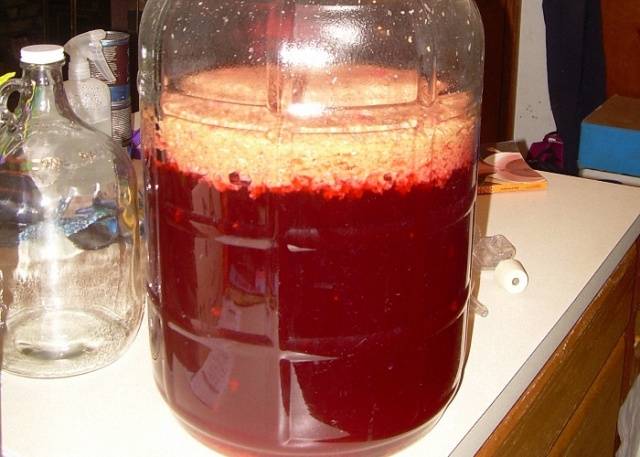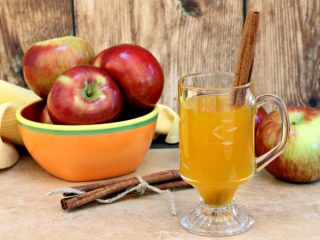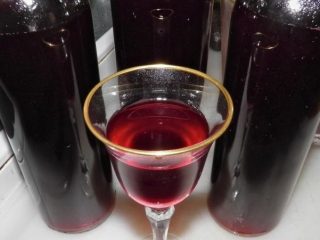Content
Every year, housewives prepare a bunch of supplies for the winter - canning, salting and fermenting vegetables, making preserves and jams. Often even a large family does not have time to eat them in a season, so large and small jars remain in basements, cellars or pantries for years. But the time comes when the container runs out, space becomes scarce, or the sight of a battery of supplies that have not been used for years simply begins to irritate. Then the uneaten cucumbers and salads end up in the trash. Sweet supplies are turned into mash, to later become moonshine, or they end up in the same trash heap.
Meanwhile, you can make homemade wine from jam. Of course, this drink will not be elite, but if everything is done correctly, it will turn out aromatic and tasty. It’s great that not only old jam is suitable for making alcohol; it is made from a candied or even sour product.
Raw materials for wine from jam and containers
To make wine from jam at home, you need to prepare enamel dishes for fermenting the wort, glass cylinders with a capacity of 3 or 5 liters, a water seal or medical gloves, gauze, and the sweet supplies themselves intended for processing.
Containers for making alcohol must first be washed with soda, and glass jars must be additionally sterilized. Homemade wine from old jam can only be made if it is of good quality, candied or sour. Even the slightest traces of mold on the surface completely exclude the possibility of further processing. No matter how you collect the white deposits with a spoon, you will not be able to make wine from jam contaminated with pathogenic microorganisms. It won't help even if you throw away half the jar.
Sourdough for wine
To make homemade wine from jam, you may need wine yeast. They're not easy to come by, especially if you only make occasional alcoholic drinks, so it's easier to use a starter. Unwashed rice or raisins can be added to sour or sugared jam to enhance fermentation.
It’s even better to prepare sourdough using one of the methods given in our article. Grape wine at home: a simple recipe.
Baker's yeast cannot be used in winemaking. Even if you don’t get mash instead of a noble drink, its smell will be clearly noticeable. No amount of aging or filtration will help get rid of the moonshine smell.
Is it necessary to add sugar to jam wine?
Although the process of making wine from candied jam is very similar to making a drink from fresh fruits or berries, you need to remember that there are still differences. This mainly concerns the fermentation of wort.
When homemade wine is made from fermented jam, the sugar contained there breaks down into alcohol and carbon dioxide. The strength of the wine directly depends on its quantity. But if the alcohol level in the wort reaches 20%, fermentation will stop, not because it ended naturally, but because of the death of beneficial microorganisms that ensure the fermentation processes.
Therefore, before making homemade wine, you need to think carefully about the recipe for its preparation. If you add little water, you don't need to add sugar. When the ratio of liquid to jam is 4:1 or 5:1, the wort is still not sweetened at the initial stages if it ferments well. You can add sugar in parts after you put the wine under the water seal.
Recipes for wine made from jam
There are many recipes for making wine, including those made from fermented or candied jam.
Basic recipe
Using this example, we will describe in detail the recipe for homemade wine from jam, point out possible difficulties and ways to eliminate them.
Ingredients
Required:
- jam – 1 l;
- water – 1.5 l;
- raisins (sourdough) – 100 g.
You may also need a little sugar. We will describe below how much and in what cases it should be added.
Remember, any wine recipe implies that the wort will contain no more than 20% sugar. Otherwise, it simply won’t ferment.For wine made from fermented jam, at home, the above amount of water may be sufficient. The candied mixture is diluted with a large volume of liquid.
Cooking method
Transfer the jam to a clean container and pour in warm boiled water. Add unwashed raisins and mix well. The fermentation container should be approximately 3/4 full.
Cover the dishes with clean gauze and place in a warm place (18-25 degrees). After 15-20 hours, the pulp from jam that has turned sour or tends to become sugary will begin to ferment and float to the top. Stir it several times a day with a wooden spoon or spatula.
You may find that the wort has not fermented well and the room temperature has not dropped below 18 degrees. Try the liquid:
- if it becomes sour, add 50 g of sugar for each liter;
- if the wort, on the contrary, is overly sweet, add a glass of water to the same volume.
After 5-6 days, strain the wort through layers of gauze, pour into clean glass containers, filling them 3/4 full, install a water seal or put on a rubber glove with one pierced finger.
Place the cylinders in a warm place to continue fermentation. The process usually takes from 30 to 60 days.
When the water seal stops releasing bubbles or the glove falls off, taste the wine. If you feel that it has not fermented or is too sour, you can add sugar at the rate of 50 g per liter.
If fermentation has stopped and you are satisfied with the taste of the drink, bottle it so as not to disturb the sediment and seal it.
Store the wine in a cool room with a temperature of 10-12 degrees for 2-3 months. Gently strain it every 20 days. Then pour into bottles again, seal tightly and store.
From raspberries or blueberries
You can make a wonderful aromatic wine from fermented raspberry jam. It will be an excellent addition to sweet dishes, and in itself will decorate any table.
Ingredients
You will need:
- raspberry jam – 1 l;
- water – 2.5 l;
- raisins – 120 g.
Cooking method
Dissolve raspberry jam with warm water and add raisins.
Place in a dark, warm place for pre-fermentation for 5 days. Don't forget to stir.
If at a temperature of at least 18 degrees after 24 hours fermentation is weak or does not occur at all, try the liquid. Add sugar or water if necessary as directed in the basic recipe.
Strain the wine through folded cheesecloth and pour into clean glass jars, filling them 3/4 full. Install a water seal.
When fermentation stops, remove the wine from the sediment, then bottle it and take it to a cool place for quiet fermentation.
After 2 months you can drink the drink. It will be light and fragrant.
This is exactly how you can make wine from blueberry jam.
From currants
If you want to quickly make wine, make it from currant jam.
Ingredients
You will need:
- currant jam – 1 l;
- water – 2 l;
- wine yeast – 20 g;
- rice – 200 g.
Cooking method
Dissolve the yeast with warm water and let it sit for as long as it says on the package.
Pour unwashed rice and jam into a five-liter container, add liquid, stir well. Add yeast, cover with gauze, and place in a warm, dark place for 5 days.
The wine made from jam with yeast and rice should ferment very well; if this does not happen, add water. Don't forget to stir the wort with a wooden spatula.
Strain the wine, pour into glass containers, filling no more than 3/4 of the volume. Place a water seal or put on a medical glove and prick one finger. Let ferment in a dark, warm place for 20 days.
When the glove falls off, drain the homemade currant jam wine from the sediment and pour it into bottles.
This is a quick and easy recipe. You can let the wine brew for 2-3 months, or you can drink it right away.
From cherry
Cherry jam wine, perhaps the most delicious and beautiful. It contains natural sourness and is ruby in color.
Ingredients
You will need:
- cherry jam – 1 l;
- water – 1.5 l;
- raisins – 170 g.
Cooking method
Mix all ingredients in a three-liter jar. Cover with gauze and leave in a warm place to ferment. Stir several times a day with a wooden spatula.
If the cherry jam wine ferments poorly, taste the liquid and add water or sugar.
After 5 days, strain the wort into a clean jar and put on a pierced glove. Leave to ferment for 40 days.
When the glove falls off, remove the wine from the sediment, pour it, cap the bottles, place horizontally in a cool place to ripen for 2 months.
Conclusion
As you can see, the missing jam can be used not only for making mash.And even though it is impossible to make elite wine from it, the drink will turn out tasty and aromatic.




















